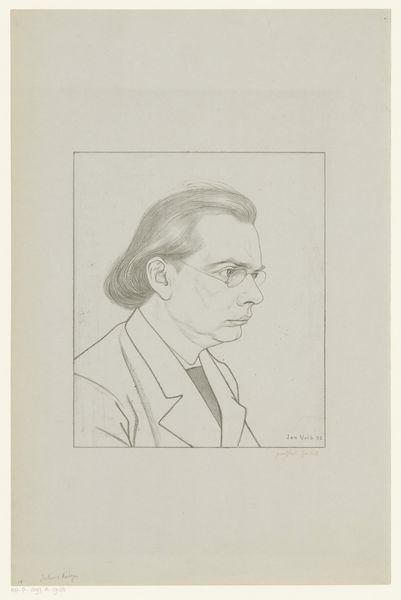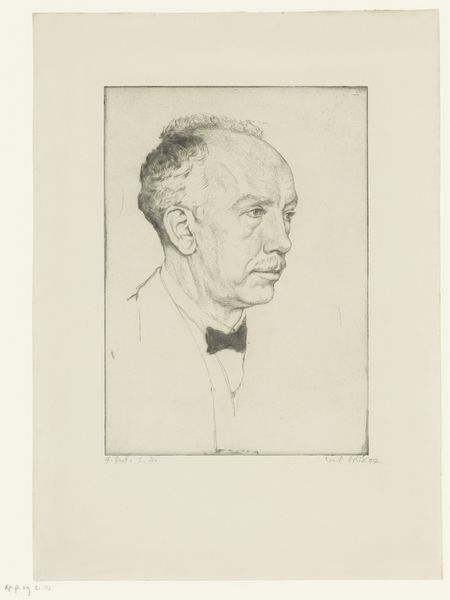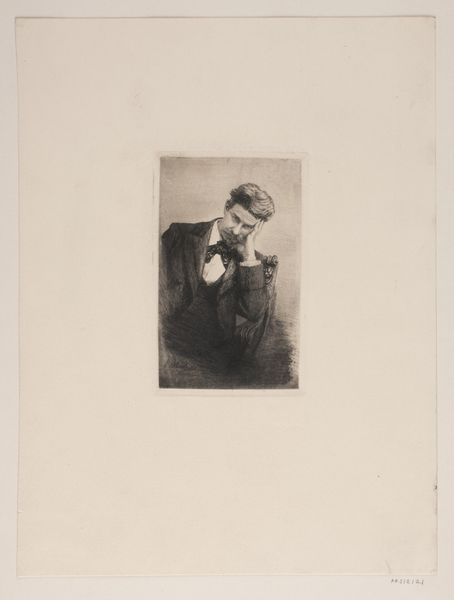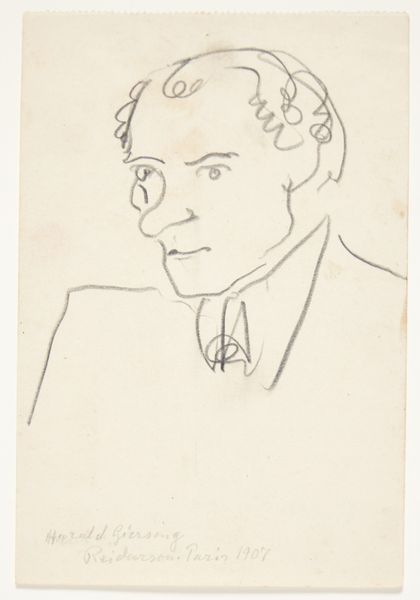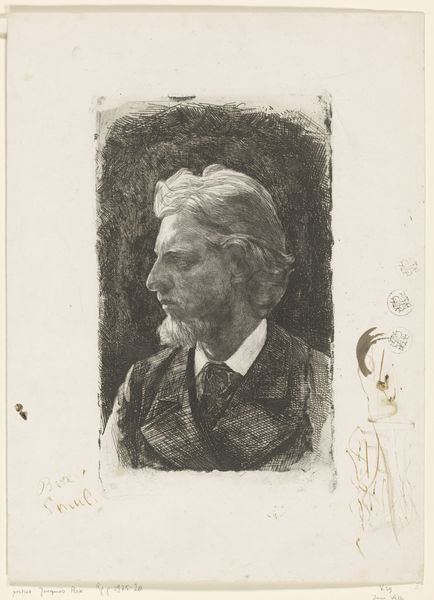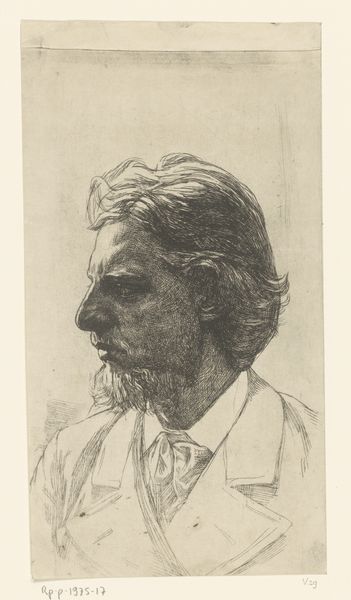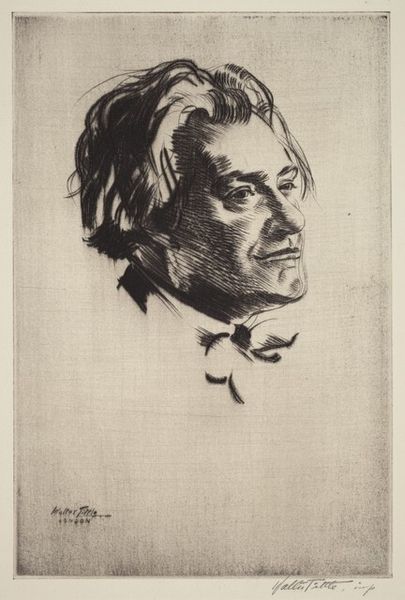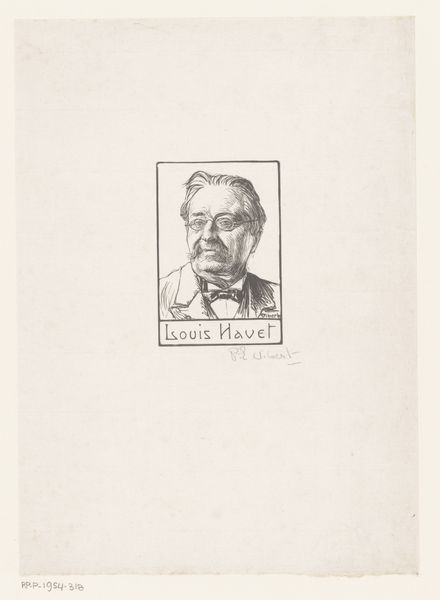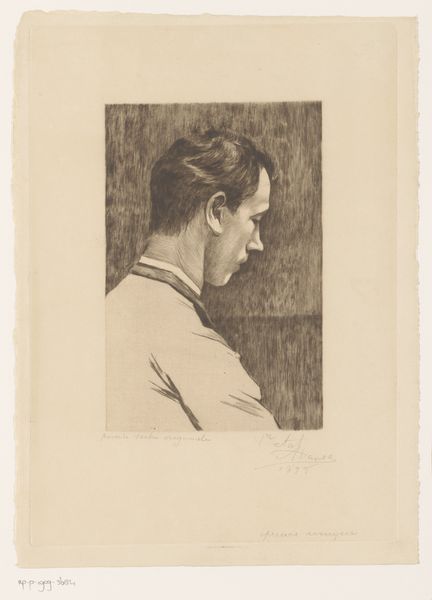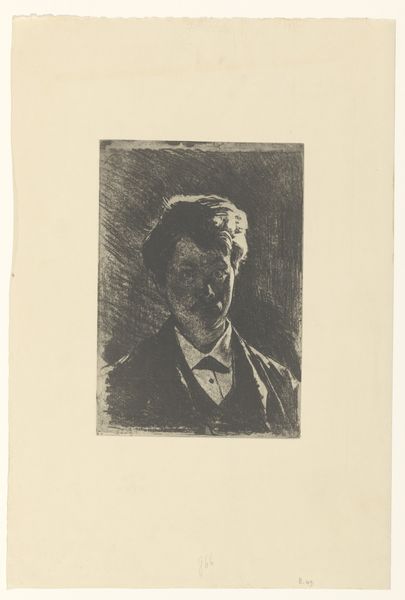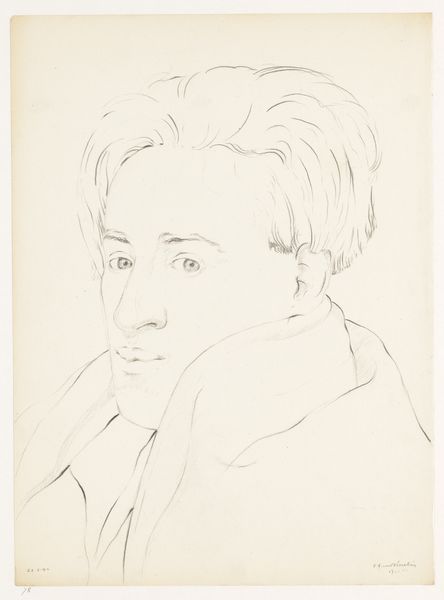
drawing, ink, pencil
#
portrait
#
drawing
#
caricature
#
german-expressionism
#
ink
#
pencil
#
expressionism
#
portrait drawing
Dimensions: height 293 mm, width 199 mm
Copyright: Rijks Museum: Open Domain
Editor: Here we have Emil Orlik’s "Portret van Gustav Mahler," created in 1902 using pencil and ink. There’s a nervous energy in the lines, a real sense of Mahler's intensity. What strikes you about this piece? Curator: What strikes me is how this image participates in the making of Mahler's persona. We have to remember this was made during a pivotal moment where celebrity and the visual arts intertwined to shape public perception. Consider the institutional framework: art galleries, newspapers, and even concert halls displayed such portraits, helping construct Mahler's image as a modern musical genius. Editor: So you're saying the portrait isn’t just a likeness, it’s active in shaping his reputation? Curator: Precisely. How does the artist's choice of German Expressionism contribute? Doesn’t it reinforce this notion of Mahler being a tortured, emotionally-driven artist? These visual cues played directly into the burgeoning cult of the composer. It becomes less about capturing his *actual* appearance, and more about fulfilling the public's expectations. Editor: That makes sense. I hadn’t considered the influence of social expectation. Curator: And note how Orlik chooses a side profile. Is it an act of reverence or subtle distancing? Perhaps it's suggesting Mahler is visionary but somewhat aloof. How does that visual narrative fit into the wider story of artistic genius at the turn of the century? Editor: That's fascinating, I will definitely have to think about the public role of art and the expectations of artistic expression. Curator: Excellent. The way that cultural moments reflect onto artwork always enrich interpretation. I will look forward to hearing your perspective next time!
Comments
No comments
Be the first to comment and join the conversation on the ultimate creative platform.
